Some Common Botanical Terms
Arboretum : an area where woody plants (trees and shrubs) are grown for scientific/ educational purposes, for example, Westonbirt, the National Arboretum near Tetbury in Gloucestershire.
http://www.forestry.gov.uk/forestry/infd-6xcmkm
Archaeophytes : archaeophytes are ‘ancient introductions’, plants that were introduced (accidentally or deliberately) by humans before 1500 AD. Ancient introductions are plants like poppies (Papaver sp), which came in with crop seeds, whilst other species might have been introduced for medicinal or other uses.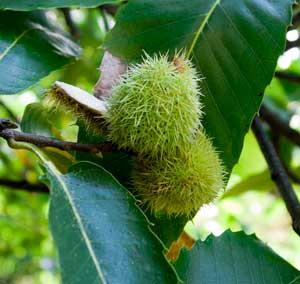 Many are now are now thought of as part of our flora, such as the Sweet Chestnut. https://www.woodlands.co.uk/blog/nature-surveys/plants-past-present-part-2/
Many are now are now thought of as part of our flora, such as the Sweet Chestnut. https://www.woodlands.co.uk/blog/nature-surveys/plants-past-present-part-2/
Axiophytes : Axiophytes are ‘worthy or valued plants’, sometimes viewed as indicator species. They are species that elicit the interest of botanists when they are found. They are regarded as pointers to a habitat that is worthy of conservation, such as ancient woodland or species rich meadow.The greater the number of such plants, the better the quality of the habitat being investigated. http://www.bsbi.org.uk/html/axiophytes.html
Bast : a term sometimes used for the phloem tissue of a tree.The phloem tissue transports sugars around the plant (e.g. from leaves to the roots). http://www.yourdictionary.com/bast
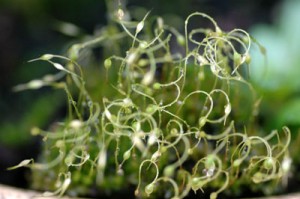 Bryophytes: these are mosses and liverworts. They represent the oldest form of land plants.Mostly they are (individually) quite small, though they may (collectively) forms ‘mats’ or ‘cushions’ on woodland floors, rocks or tree trunks.There is an excellent introduction to the mosses and lichens found in towns and gardens by the British Bryological Society. http://www.microscopy-uk.org.uk/mag/artjul98/jpmoss.html
Bryophytes: these are mosses and liverworts. They represent the oldest form of land plants.Mostly they are (individually) quite small, though they may (collectively) forms ‘mats’ or ‘cushions’ on woodland floors, rocks or tree trunks.There is an excellent introduction to the mosses and lichens found in towns and gardens by the British Bryological Society. http://www.microscopy-uk.org.uk/mag/artjul98/jpmoss.html
Conifer(s) : a varied group of plants, most are evergreen.Examples include the redwoods, pines, yew, juniper, spruces and larches. In some parts of the world, conifers form the dominant vegetation e.g. The Taiga. Conifers are important economically – softwood for timber and paper production. https://www.woodlands.co.uk/blog/trees/the-yew/
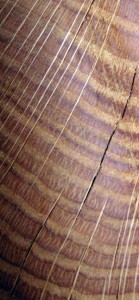 Dendrochronology : this is a technique used to date wood samples that is based on the study of the annual rings of various tree species.Each year a tree produces a growth ring.If the conditions for growth are good then a wide ring is produced.If on the other hand, conditions are tough (e.g. it is cold and dry) then the width of the annual ring is much less.By studying samples of wood taken from very old living trees, it is possible to build up a picture of the growth pattern of the annual rings over many (hundreds) years.This pattern can then be compared to the pattern observed in wood found in archaeological excavations, old houses etc. http://sonic.net/bristlecone/dendro.html
Dendrochronology : this is a technique used to date wood samples that is based on the study of the annual rings of various tree species.Each year a tree produces a growth ring.If the conditions for growth are good then a wide ring is produced.If on the other hand, conditions are tough (e.g. it is cold and dry) then the width of the annual ring is much less.By studying samples of wood taken from very old living trees, it is possible to build up a picture of the growth pattern of the annual rings over many (hundreds) years.This pattern can then be compared to the pattern observed in wood found in archaeological excavations, old houses etc. http://sonic.net/bristlecone/dendro.html
Epiphytes : this is a plant that lives on another plant, but does not harm it in any way.Lichens and mosses are epiphytes on oaks.The Oaks provide something for the lichens to grow on, but the lichens take nothing from the oak. http://www.kew.org/ksheets/epiphytes.html
Gymnosperm : a plant, such as a conifer (see above), that reproduces by seeds that are produced ‘in the open’ on the bract of a cone instead ofinside an ovary/fruit (as in flowering plants). http://en.wikipedia.org/wiki/Gymnosperm
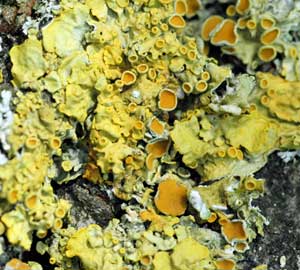 Lichens : Lichens are rather unusual in that they are an amalgam of two organisms : a fungus and algae. They are symbiotic systems, where two partners work together for mutual benefit. The fungus makes up the bulk of the lichen’s structure (known as the thallus), but the algae (or cyanobacteria) are essential as they can photosynthesise and provide the organism with carbohydrates. Lichens come in an amazing variety of shapes, sizes and colours – there are about 30,000 species worldwide. Some grow in extreme environments such as the rocky summits of mountain ranges, growing slowly, and live for hundreds of years. https://www.woodlands.co.uk/blog/plants-flowers/lichens/
Lichens : Lichens are rather unusual in that they are an amalgam of two organisms : a fungus and algae. They are symbiotic systems, where two partners work together for mutual benefit. The fungus makes up the bulk of the lichen’s structure (known as the thallus), but the algae (or cyanobacteria) are essential as they can photosynthesise and provide the organism with carbohydrates. Lichens come in an amazing variety of shapes, sizes and colours – there are about 30,000 species worldwide. Some grow in extreme environments such as the rocky summits of mountain ranges, growing slowly, and live for hundreds of years. https://www.woodlands.co.uk/blog/plants-flowers/lichens/
Neophytes : Neophytes are plants introduced since AD 1500. They include all the plants brought back from various parts of the world by plant collectors/gardeners, which escaped from gardens or were planted in the wild and then spread. Examples of neophytes range from Michaelmas daisies (Aster sp) to the infamous Japanese knotweed (Fallopia japonica). https://www.woodlands.co.uk/blog/nature-surveys/plants-past-present-part-2/
Parasite : an organism that lives on or in another organism (called the host), to the detriment of the host.Parasites can be animals or plants.Many plant diseases are due to fungal or bacterial parasites.https://www.woodlands.co.uk/blog/conservation/horse-chestnuts-under-attack/
Phenology : Phenology is all about observation; recording when things happen, such as when horse chestnut and ash trees come into leaf, or when the first swifts or bumblebees are seen. These timings vary from year to year. By recording natural events over many years, one can look for trends and see if they are correlated with changes in the weather or other phenomena. Many phenological observations have been associated with global warming and climate change. https://www.woodlands.co.uk/blog/conservation/phenology/
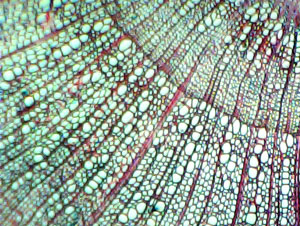 Phloem : this tissue lies underneath the cork / bark, that conducts sugars and materials from the leaves to the roots and other regions of the plant – sometimes called the bast (see above). http://www.biology-online.org/dictionary/Phloem
Phloem : this tissue lies underneath the cork / bark, that conducts sugars and materials from the leaves to the roots and other regions of the plant – sometimes called the bast (see above). http://www.biology-online.org/dictionary/Phloem
Sessile : this refers to a leaf, flower or fruit without a stalk, for example, the sessile oak has acorns with no stalks.
Xylem : wood is made up of xylem tissue. It consists of microscopic pipes or tubes through which water and minerals flow, the pipes tubes formed in the Spring and generally bigger than those formed in late summer; this difference gives rise to the annual rings that are seen when a tree is cut down.The main component of xylem is the substance called lignin, which is very slow to break down.
Comments are closed for this post.
